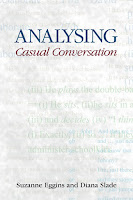The programme contained plenty of interesting papers and lots of fascinating research projects. Main topics included healthcare, education, identity, the language of Brexit, and issues of methodology. The conference offered papers of a very high standard and most parallel sessions required difficult choices to be made of what to see and what to miss.
The plenary sessions were informative and thought-provoking (er, with one exception) and fortunately all of them are available from here. Here is a small sample:
Finally, here is the presentation that I was lucky enough to share with some of the delegates. I am glad to say that it generated a lot of questions (and not all of them supportive in nature). Thank you Aalborg.

























